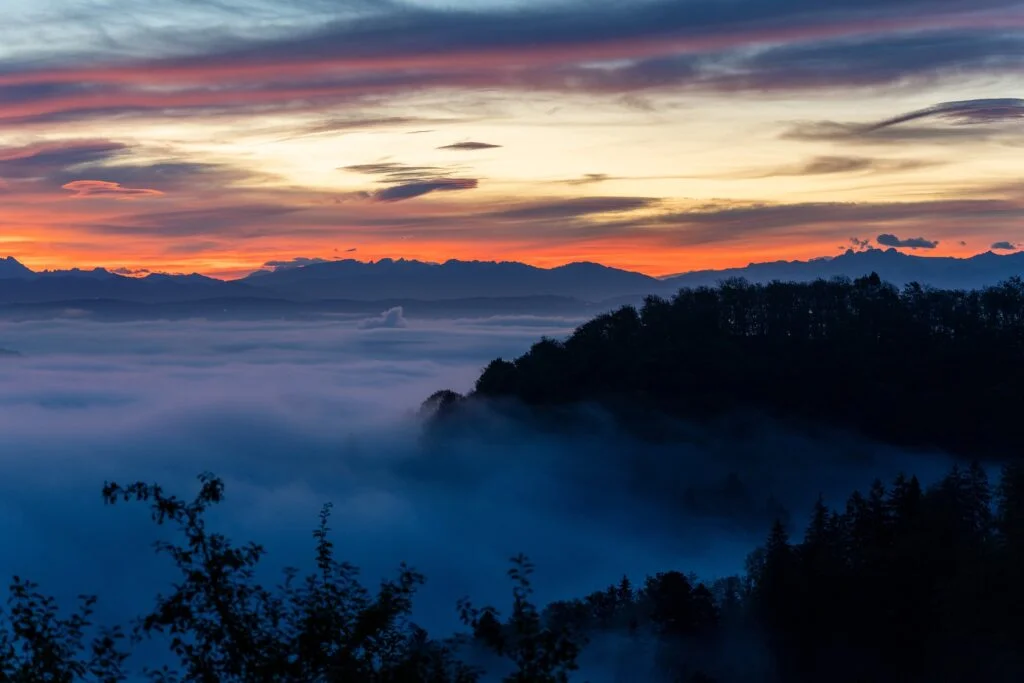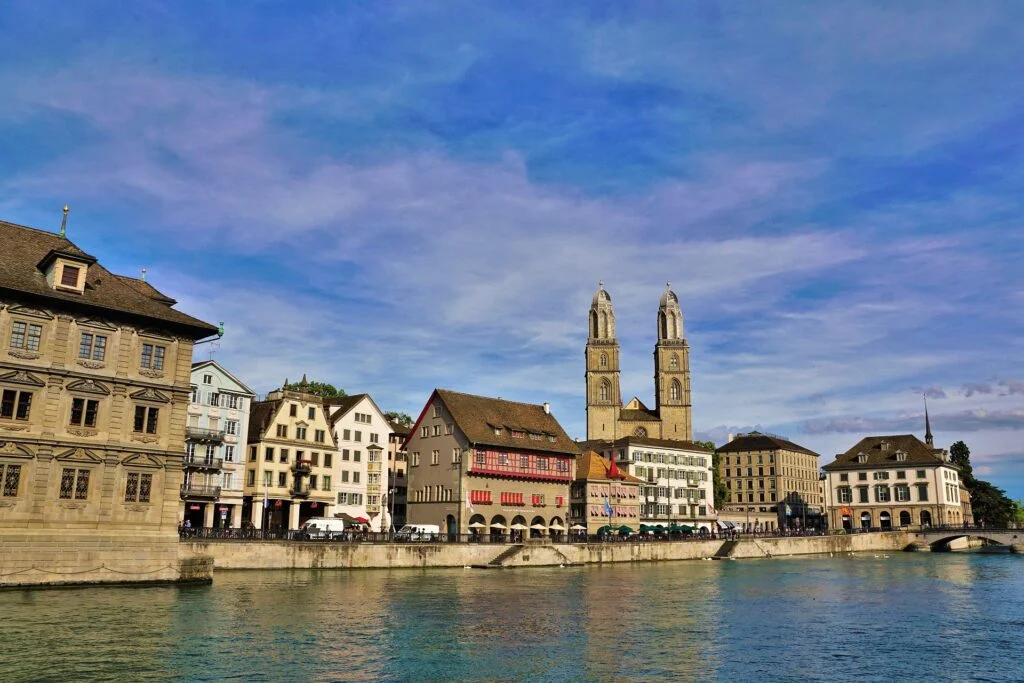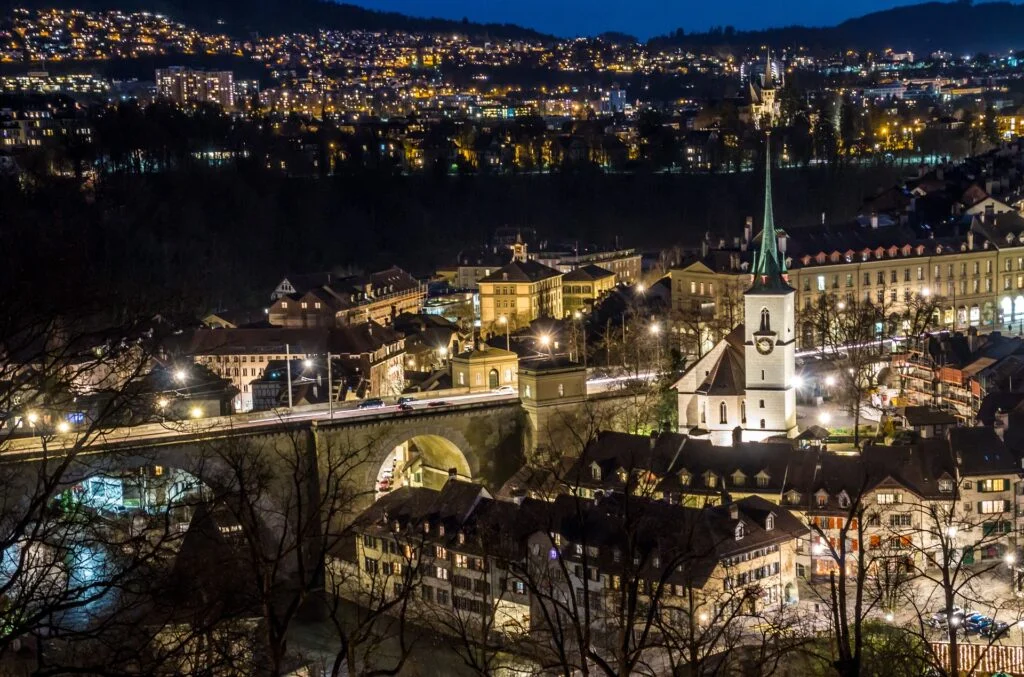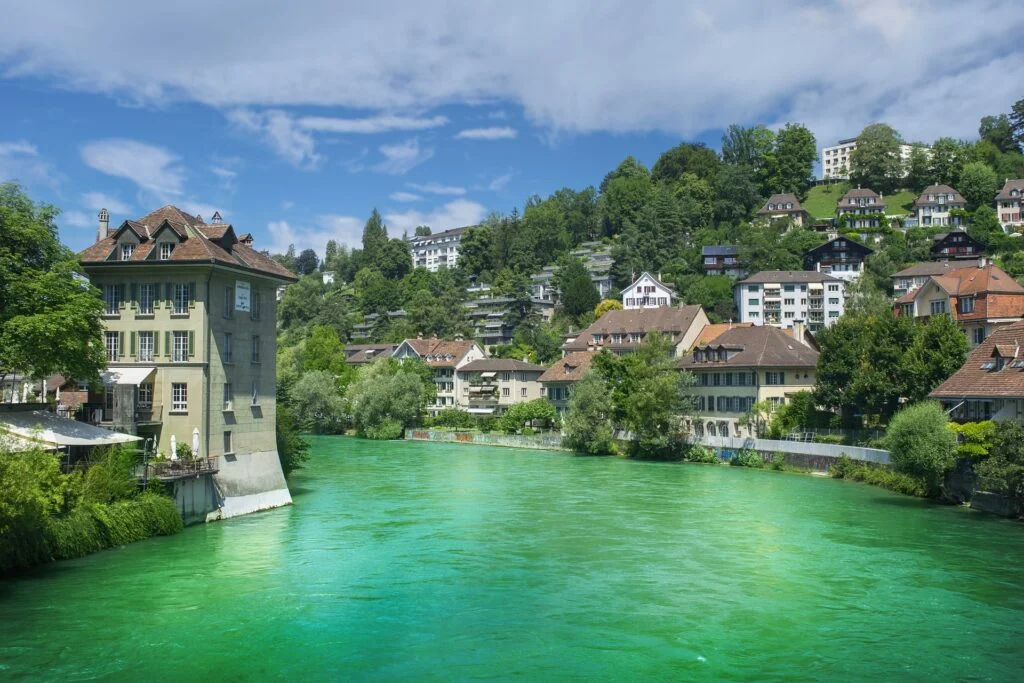Switzerland is a beautiful alpine paradise. It offers many seasonal attractions all year round. You can enjoy winter sports, see spring blossoms, have summer fun, or watch autumn leaves.
Planning your trip to Switzerland? Knowing what each season offers helps you pick the best time. This way, you can make the most of your visit to this magical place.
Key Takeaways For Switzerland Lover
- Switzerland offers a diverse range of seasonal attractions for travelers throughout the year.
- Weather patterns, temperature variations, and the impact of alpine geography shape the climate and tourism in Switzerland.
- Peak tourist season in Switzerland can vary depending on individual preferences and travel goals.
- Off-season travel can provide budget-friendly opportunities and fewer crowds, but some seasonal activities may be limited.
- Regional weather variations across Switzerland can influence the optimal time to visit specific destinations.
Understanding Switzerland’s Four Distinct Seasons
Switzerland’s mountains and valleys create a unique weather pattern. The Swiss climate changes dramatically from year to year. Knowing the seasonal changes is key to enjoying the alpine weather.
Weather Patterns Throughout the Year
Switzerland has a continental climate. Summers are warm, and winters are cold and snowy. Spring and fall are more unpredictable, with sunny and rainy days.
Some areas get more snow than others. This is because of the Alpine geography.
Seasonal Temperature Variations
Summer in Switzerland can be up to 30°C (86°F). Winter can drop to -10°C (14°F) or colder in the mountains. These temperature changes affect plants, animals, and outdoor activities.
Impact of Alpine Geography on Climate
- Elevation greatly affects Switzerland’s alpine weather. Higher places are cooler and wetter.
- Mountain and valley orientations create local weather differences. This affects temperature, humidity, and wind.
- Being near big lakes like Lake Geneva and Lake Constance also changes the Swiss climate. It makes temperatures more stable and affects rain.
To have a great visit to Switzerland, it’s important to know about its seasons and Alpine geography. This helps plan your trip for the best weather.
Peak Tourist Season in Switzerland
Switzerland is a top choice for travelers with its stunning landscapes and lively cities. But, some times of the year are busier than others, known as the “Swiss high season.” Knowing when these busy times are can help you plan your trip better.
Summer, from June to August, is the busiest time in Switzerland. People come to enjoy the warm weather, see the beautiful towns, and hike the Alps. Places like the Matterhorn, Lake Geneva, and Jungfrau Region get very crowded.
Winter, from December to February, is also very busy. Ski lovers go to famous resorts like Zermatt, Verbier, and St. Moritz. This season also has magical Christmas markets and festive events.
The Swiss high season is exciting but has downsides. More people mean longer waits at popular spots, higher prices, and a tough time getting reservations. Travelers might want to visit during the shoulder seasons for better weather and fewer crowds.
| Season | Peak Travel Times | Pros | Cons |
|---|---|---|---|
| Summer | June to August | Warm weather Outdoor activities Lively festivals and events | Larger tourist crowds Higher prices Increased competition for accommodations and reservations |
| Winter | December to February | Excellent skiing and winter sports Christmas markets and festive celebrations | Larger tourist crowds Higher prices Potential for inclement weather |
Visiting Switzerland during the high season or shoulder seasons can be memorable. Knowing the busy times helps you plan a great trip. You can make the most of your Swiss adventure by choosing the right time to visit.
Winter in Switzerland: December to February
Experience the magic of Switzerland’s winter wonderland! From December to February, you can dive into snow sports and festive fun across the country.
Best Ski Resorts and Winter Sports
Switzerland is famous for its top-notch Swiss skiing and winter activities. Zermatt, Verbier, and St. Moritz are among the best ski spots. They offer stunning views and ski areas for all skill levels.
But there’s more than skiing. You can also try snowboarding, ice skating, sledding, and winter hiking. These activities let you explore the beautiful snow-covered mountains.
Christmas Markets and Festivities
The winter season in Switzerland is filled with Christmas markets. These markets are found in cities and towns, offering a festive atmosphere. You can find unique gifts, enjoy warm mulled wine, and feel the holiday spirit.
Make sure to visit the Zürich Christmas Market. It turns the city’s historic center into a magical winter wonderland.
Winter Transportation Tips
Traveling in Switzerland during winter needs some planning. Mountain passes might be closed due to snow. Check road conditions and use the reliable Swiss rail network instead.
Remember to dress warmly. Be ready for possible delays or changes as you enjoy this winter snow sports paradise.
Spring Travel to Switzerland: March to May
As snow melts and days get longer, Switzerland turns into a lively spring paradise. From March to May, the country is filled with Swiss spring wildflowers. This is a great time to visit, with fewer people, nice weather, and lots of things to do.
The Swiss spring is famous for its wildflowers covering the meadows and valleys. Hikers see a rainbow of colors, from alpine roses to gentians, on the trails. The weather is perfect for drives, birdwatching, and photography, letting visitors enjoy the calm shoulder season.
Switzerland’s culture also blooms in the spring. Many towns and cities have festivals and events. You can enjoy Swiss music, dance, and food, and learn about the country’s history and architecture.
| Top Spring Activities in Switzerland | Highlights |
|---|---|
| Wildflower Hiking | Discover a vibrant tapestry of alpine flowers, from delicate orchids to vibrant gentians. |
| Cultural Festivals | Attend lively celebrations of Swiss music, dance, and cuisine in towns and cities across the country. |
| Scenic Drives | Explore the picturesque Swiss landscape, with its winding roads, snow-capped peaks, and charming villages. |
| Birdwatching | Spot a diverse array of avian species as they return to the Swiss Alps and meadows during the spring. |
Looking for a peaceful shoulder season getaway or a chance to see the Swiss spring beauty? This season offers a special and magical view of Switzerland.
Summer Adventures in Switzerland: June to August
As the snow melts and days get longer, Switzerland turns into a lively summer spot. From June to August, you can dive into Swiss hiking trails, alpine lakes, and exciting summer festivals.
Hiking and Mountain Activities
Switzerland has many hiking trails for all levels. You can walk through green meadows or climb to high peaks. The Swiss Alps offer amazing views and unique plants and animals.
Rock climbing, paragliding, and mountain biking are also popular. You can fly over hills, ride tough bike trails, or climb famous routes.
Summer Festivals and Events
Switzerland’s summer is full of festivals and events. You can enjoy the Montreux Jazz Festival or the Locarno Film Festival. There’s music, dance, and food for everyone.
Lake Activities and Water Sports
Switzerland’s lakes are perfect for cooling off. You can swim, kayak, or paddleboard in the clear water. The lakes also offer skiing, wakeboarding, and sailing.
| Summer Activity | Popular Destinations | Highlights |
|---|---|---|
| Hiking | Jungfrau Region, Zermatt, Engadin Valley | Scenic trails, alpine meadows, glacier views |
| Mountain Activities | Interlaken, Gstaad, Davos | Rock climbing, paragliding, mountain biking |
| Summer Festivals | Montreux, Locarno, Lucerne | Music, film, cultural celebrations |
| Lake Activities | Lake Geneva, Lake Lucerne, Lake Zurich | Swimming, kayaking, water sports |
“Switzerland in the summertime is a dream come true – from the stunning alpine vistas to the vibrant cultural events, there’s something to captivate every visitor.” – Jane Doe, travel writer
Switzerland’s summer is full of fun for everyone. You can explore Swiss hiking trails, alpine lakes, and summer festivals. The beautiful landscapes and activities make for an unforgettable summer.
Autumn Colors in Switzerland: September to November
Switzerland’s autumn is truly magical. As summer’s warmth fades, the countryside turns into a colorful tapestry. From Valais’s vineyards to Appenzell’s forests, it’s perfect for autumn hikes and harvest festivals.
Exploring Switzerland’s hiking trails is a must in autumn. You’ll see golden larch trees and red maples. Plus, you can taste local wines in vineyards.
Switzerland’s autumn is also filled with harvest festivals. Events like the UNESCO Wine Festivals in Lavaux showcase the country’s heritage. Enjoy music, dancing, and local food and drink.
“Switzerland’s autumn is a true feast for the senses, with a bounty of flavors, colors, and experiences waiting to be discovered.”
Switzerland’s autumn offers both peace and culture. With mild weather, fewer crowds, and stunning views, it’s ideal for Swiss fall foliage lovers and autumn hikes.
Budget-Friendly Times to Visit Switzerland
Switzerland’s beautiful landscapes make for an unforgettable trip. But, it doesn’t have to cost a lot. By visiting during the off-season, you can find Swiss budget travel deals and enjoy affordable Switzerland experiences.
Off-Season Travel Benefits
The shoulder seasons, spring and fall, are ideal. They offer off-season deals and pleasant weather. You’ll see fewer people, pay less for accommodation and flight prices, and enjoy exploring at your own pace.
- Explore picturesque alpine villages without the summer throngs.
- Indulge in the vibrant fall foliage without the peak-season price tag.
- Discover hidden gems and local experiences that are often overlooked by tourists.
Money-Saving Travel Tips
To save money in Switzerland, follow these tips:
- Use public transportation, like the Swiss rail network, for affordable travel.
- Find free or low-cost attractions, like hiking trails and museums with discounts.
- Try local food at family-owned restaurants and shop at markets for meals.
- Look for alternative places to stay, like hostels, Airbnb, or campsites.
Plan your Swiss budget travel in the off-season and use these tips. You’ll discover Switzerland’s beauty without spending too much. Enjoy the affordable Switzerland experience and make memories that will last forever.
Regional Weather Variations Across Switzerland
Exploring Switzerland’s diverse microclimates is key to understanding its weather. The Alps have snow-capped peaks, while the Swiss Plateau has rolling hills. Each area has its own climate.
The Swiss Alps see big temperature changes and lots of snow in winter. The Jura Mountains in the northwest have a milder, oceanic climate with less extreme temperatures. The Swiss Plateau, between the mountains, has a continental climate with warm summers and cold winters.
| Region | Climate Characteristics | Average Temperatures |
|---|---|---|
| Swiss Alps | Alpine climate with heavy snowfall in winter | Winter: -5°C to -15°C, Summer: 10°C to 20°C |
| Jura Mountains | Moderate, oceanic climate with less extreme temperatures | Winter: -2°C to 5°C, Summer: 15°C to 25°C |
| Swiss Plateau | Continental climate with warm summers and cold winters | Winter: -5°C to 5°C, Summer: 18°C to 28°C |
Knowing the weather in different parts of Switzerland is important for planning a trip. Check the local climate and weather forecasts for your destination. This helps you pack right and enjoy your Swiss adventure.
“Switzerland’s diverse geography creates a mosaic of local climate patterns, each with its own unique charm and challenges.”
Looking for snowy Alps, milder Jura, or warm Swiss Plateau? Knowing the weather variations ensures a great trip.
Transportation and Accessibility by Season
Switzerland’s public transport system makes exploring its beautiful landscapes easy. Whether you’re off to ski in winter or hike in summer, knowing how transport changes with the seasons is key. This helps you enjoy your Swiss trip to the fullest.
In winter, some mountain passes might close due to snow. But the Swiss Travel Pass lets you travel on trains, buses, and lake steamers easily. This pass covers everything, so you can see the country’s beauty without worrying about tickets.
| Season | Transportation Highlights |
|---|---|
| Winter | Mountain passes may be closed due to snow Swiss Travel Pass provides access to trains, buses, and lake steamers Ski resorts offer shuttle services and convenient transportation options |
| Spring | Mountain passes reopen as snow melts Scenic train journeys offer views of blooming landscapes Public transport schedules resume regular operations |
| Summer | Mountain passes are fully accessible for hiking and outdoor adventures Trains and buses operate at peak frequency to accommodate tourist demand Swiss Travel Pass remains a convenient option for seamless travel |
| Autumn | Mountain passes remain open as temperatures cool Public transport schedules transition to off-peak season Scenic train journeys showcase the stunning autumn foliage |
No matter the season, Switzerland’s public transport makes exploring easy. With the Swiss Travel Pass, you can take memorable train trips, find hidden mountain passes, and enjoy Switzerland’s scenic wonders.
Conclusion
Planning a trip to Switzerland can be thrilling. Knowing the best time to visit is key, based on what you like, your budget, and what you want to do. Switzerland is beautiful all year, with winter snow, spring flowers, summer fun, and autumn colors.
When you plan your trip, enjoy what each season brings. You can ski at top resorts or explore Christmas markets. Knowing the weather and how to get around makes your trip smooth and fun, no matter when you go.
The best time to visit Switzerland is what you want it to be. This article helps guide you. Let your interests and budget lead you to an amazing Swiss adventure. With good planning and a sense of adventure, you’ll make memories that last a lifetime in this beautiful country.
FAQ
What are the best times to visit Switzerland?
Switzerland is great all year round. The best time for you depends on what you like. Winter is perfect for skiing and festive markets. Spring and fall are great for hiking and seeing beautiful views.
Summer is the busiest time, with lots of outdoor fun and cultural events.
How do Switzerland’s four distinct seasons affect the weather and climate?
Switzerland’s weather changes a lot because of its mountains. Winters are cold and snowy, especially in the mountains. Summers are mild and nice.
Spring and fall have milder weather and fewer people, making them good times to visit.
When is the peak tourist season in Switzerland?
The busiest times in Switzerland are summer (June to August) and winter (December to February). These times have more visitors, making places crowded and prices high. But, there’s a lot to do and see.
What are the highlights of visiting Switzerland in the winter?
From December to February, Switzerland is magical. Ski lovers will find top-notch slopes. Those who love festive vibes can enjoy Christmas markets.
Keep in mind mountain pass closures and winter travel tips.
What can travelers expect during the spring season in Switzerland?
Spring (March to May) is a time of change in Switzerland. It’s less crowded, with nice weather and blooming flowers. Hikers can explore trails, and there are cultural events.
What are the highlights of visiting Switzerland in the summer?
Summer (June to August) is full of outdoor fun and cultural events. Hiking and mountain adventures are popular. Festivals and concerts celebrate the warmer months.
But, expect crowds and hot weather.
What can visitors expect during the autumn season in Switzerland?
Autumn (September to November) is beautiful and often missed. The fall colors are stunning, perfect for hiking and wine tasting. It’s less crowded, with milder weather.
When are the most budget-friendly times to visit Switzerland?
Spring and fall are cheaper times to visit. Prices for places to stay and flights are lower. You’ll also find fewer people at attractions.
Use public transport, eat affordably, and look for discounts to save money.
How do weather patterns and climate vary across different regions of Switzerland?
Switzerland’s different areas have unique weather. The Alps, Jura Mountains, and Swiss Plateau each have their own climate. Knowing this helps plan your trip and pack right.
How does transportation in Switzerland vary by season?
Switzerland’s transport works all year, but changes with the seasons. Winter might close mountain passes, and some trains run less. Summer offers scenic passes for easy travel. Plan ahead for a smooth trip.




